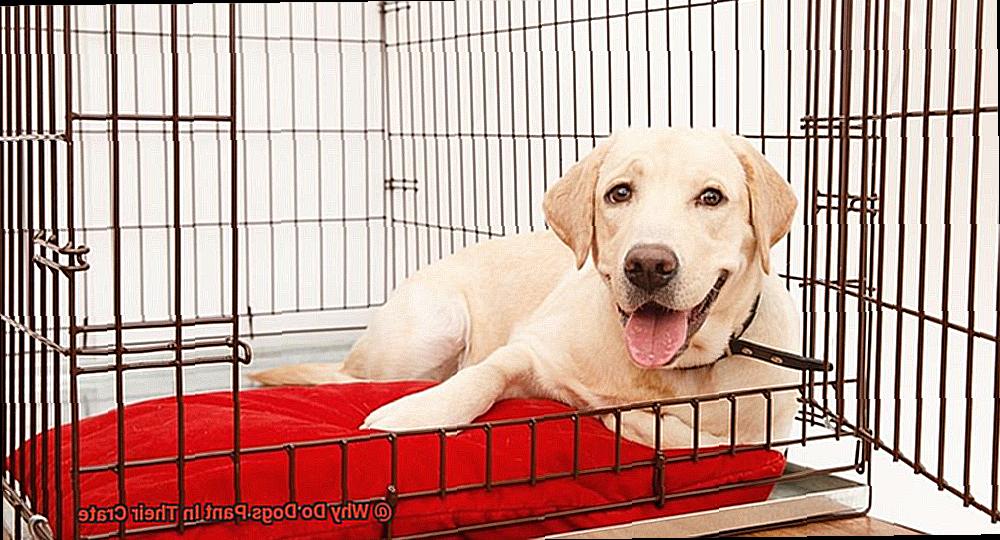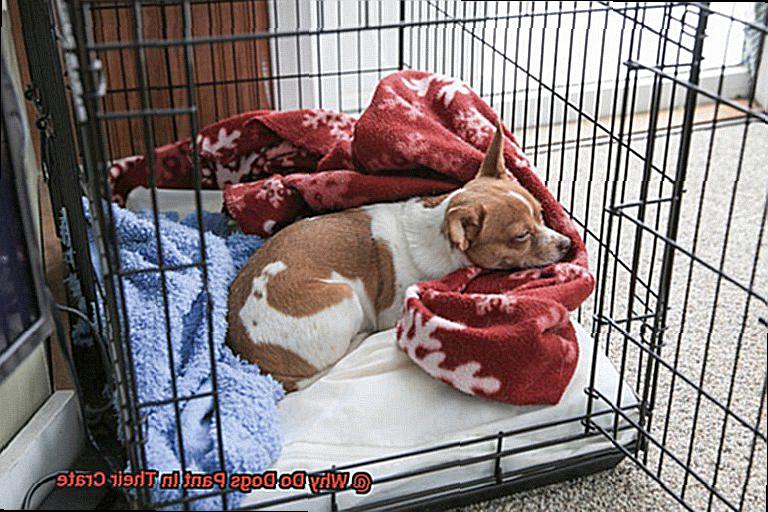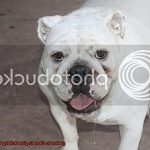Why Do Dogs Pant In Their Crate?
Have you ever noticed your pup panting in their crate? It’s a common occurrence for many pet owners, but it can be worrying if you don’t know why it’s happening.
Panting is one of the ways dogs regulate their body temperature, so it could be a sign of overheating or strain. In this blog post, we’ll explore why dogs pant in their crate and how to make them feel more comfortable.
Panting in the crate may have several explanations. Dogs may pant due to being restricted in a small space or if the crate is too hot. Some pups also love having a den-like space to retreat to, and they may express contentment by panting there.
Whatever the cause of your pup’s panting, it’s important to ensure they have a safe environment inside their crate.
Make sure the temperature is comfortable and that there is sufficient ventilation. Also, provide plenty of toys and bedding items so your dog can stay entertained and relaxed while inside.

If your dog continues to show signs of distress when in the crate, consult with your veterinarian for further advice on making them feel at ease in their secure environment.
What is Panting in Dogs?
Contents
- 1 What is Panting in Dogs?
- 2 Common Causes of Panting in Dogs in their Crate
- 3 Reasons Why a Dog Might Pant While Sleeping
- 4 Signs to Look Out for if Your Dog is Too Hot in Their Crate
- 5 Ways to Keep Your Dog Cooler in Their Crate
- 6 How to Help Your Dog Feel More Comfortable in Their Crate
- 7 Tips on Reducing Stress Levels for Your Dog When In Their Crate
- 8 Benefits of Providing a Comfortable Environment for Your Dog While In Their Crate
- 9 Conclusion
Panting in dogs is a normal behavior used to regulate their body temperature. It’s their way of cooling down when they get too hot – similar to how humans sweat to cool off. Panting increases air circulation around the body, allowing heat to escape and helping them take in more oxygen.
So if you notice your pup panting after playing or running around, it’s likely because they need the extra oxygen.
It’s important to note that panting can also be a sign of stress or anxiety. Pay close attention to your puppy and look for other signs of distress. If something is wrong, don’t hesitate to call your vet right away.
They can help ensure that your dog is happy and healthy.
Common Causes of Panting in Dogs in their Crate
Panting in dogs can be a sign that something is wrong when they are in their crate. To help you understand why your pup might be panting, here are the four common causes of panting in dogs in their crate.
Heat
Heat is one of the main factors that can cause panting in dogs. If your pup’s crate is located in a hot room or if they are wearing too much clothing, it can make them uncomfortable and cause them to pant. To keep your pup comfortable, make sure the room temperature is at a safe level and that your dog isn’t wearing too many layers.
Stress and anxiety
Stress and anxiety can also lead to panting in dogs. If your pup is exposed to loud noises or unfamiliar people, they will become anxious and start to pant as a result. To reduce anxiety, give your dog plenty of mental stimulation and create a calm environment for them.
Overexertion
Overexertion can also cause panting while in the crate. If your dog has been running around and playing for too long, they may need to cool down after all the excitement by taking some time out in their crate. Make sure your pup gets plenty of breaks throughout the day so they don’t get overtired.
Illness
Finally, illness can be another reason why your dog may be panting while in their crate. Panting can be a symptom of respiratory disease, heart disease, or even cancer, so it’s important to get your dog checked out by a specialist if you find any unusual behavior or signs.
It’s important to pay attention to any changes you notice with regards to your dog’s health or wellbeing when they are in their crate as these could indicate an underlying issue causing them to pant.
Consult with a vet if you have any questions or concerns about why your pup might be panting when they’re in their crate.
Reasons Why a Dog Might Pant While Sleeping
It can be concerning to see your pup panting while they sleep, but it’s actually quite normal. Here are 4 possible reasons why your dog might pant while sleeping:
- If they’re feeling too hot or uncomfortable in their crate, they may start to pant as a way of cooling down. Try adjusting the temperature or adding a few extra blankets to make them more comfortable.
- Anxiety can also cause panting when sleeping, especially if they’re feeling stressed or unaccustomed to their crate. Try providing some extra stability and warmth with a favorite toy or blanket.
- Medical conditions like heart disease can cause an elevated heart rate and difficulty breathing, which can lead to panting while sleeping. If you suspect this is the case, contact your vet for advice and treatment options right away.
- Lastly, some dogs may simply be excited or anxious as they awaken! Panting is their way of expressing this excitement, so don’t worry if it’s occasional and not accompanied by other signs of distress.
If your pup is panting while asleep, it’s usually nothing to worry about – just keep an eye on them and consult with your vet if necessary.
Signs to Look Out for if Your Dog is Too Hot in Their Crate
It’s essential to make sure your pup is safe and comfortable in their crate, but if it’s too hot, it can be dangerous for them. To help you keep an eye out for any potential problems, here are five signs to look out for if your dog is too hot in their crate.
If your dog is panting heavily and drooling, or has red or pale gums, this could be a sign that they are too hot. Additionally, heavy panting, whining and/or shaking can also indicate that they are too warm.
To ensure your pup stays comfortable in their crate, the temperature should remain between 65-75°F. Make sure to monitor the temperature regularly so that it doesn’t get too hot for them.
Ways to Keep Your Dog Cooler in Their Crate
Keeping your pup cool in their crate is essential for their comfort and well-being. If you’re looking for ways to keep your pooch cool, we’ve got you covered.
First things first, set up a fan or air conditioner to circulate the air. This will help keep your pup from getting too hot. You can also place a cold pack or towel in the crate for extra cooling.
Another great way to help them stay refreshed is to add ice cubes to their water bowl. For additional cooling, you can also place an ice pack or cold water bottle in the crate.
Make sure to keep the crate away from direct sunlight as this will make it unbearably hot.
Additionally, make sure that the crate is well ventilated so that air can flow freely. Lastly, choose a breathable material such as cotton or linen for the bedding and blanket in the crate as these products are more lightweight and will help keep your pup cooler.
How to Help Your Dog Feel More Comfortable in Their Crate
When it comes to helping your pup feel more comfortable in their crate, there are a few key steps you can take. Here’s how to make sure your pup is happy and relaxed in their space:
Provide a Cozy Bed for Your Dog In Their Crate
To ensure that your pup is getting the restful sleep they need, give them a bed that is comfortable and cozy. Look for one made from soft fabrics with plenty of padding, and make sure it fits your pup correctly – not too large or too small.
Monitor the Temperature
It’s important to check the temperature in your pup’s crate to make sure it’s not too hot or too cold. Use a thermometer to measure the temperature, and if necessary, place a fan near their crate on hot days to keep them cool and comfortable.
Add Something Familiar
Adding something familiar to your pup’s crate will help them feel secure when inside, so consider placing a toy or blanket that smells like you in their space. This will bring comfort and protection when they may be feeling anxious or stressed out.
Let Your Dog Out Periodically
Giving your pup breaks from their crate throughout the day is essential for their physical and mental wellbeing. Take them out for walks or playtime outside of their crate so they can stretch their legs and get some exercise – this will also help tire them out before bedtime so they settle quickly when put back in their crate at night.
Watch Out For Excessive Panting
If you notice that your dog is panting excessively or having difficulty breathing while inside their crate, consult with your vet right away as this could indicate an underlying medical disorder that needs to be addressed immediately.
They may recommend making changes such as additional ventilation, cooling fans, or other medications based on what they suspect as the cause of your dog’s discomfort while in their crate.
Tips on Reducing Stress Levels for Your Dog When In Their Crate
Dogs can be prone to stress and anxiety, so it’s important that we take steps to ensure they are safe and comfortable when in their cage. Here are some tips for lowering your dog’s stress levels while in their crate.
Create a Cozy Environment
The size of your dog’s crate is key; make sure it is not too small or too large. Additionally, ensure there is adequate ventilation and airflow. To make sure your pup is as comfortable as possible, provide them with a soft mattress or bedding.
Utilize Calming Music or White Noise
Dogs can be sensitive to loud noises, so using calming music or white noise will help them relax and reduce stress levels.
Adequate Exercise and Playtime
Exercise is essential for dogs because it helps them release energy and stay mentally stimulated. Taking your dog on daily walks and providing access to an outdoor area where they can run and play freely will help reduce their stress levels while in the crate.
Try Calming Sprays or Diffusers
When used correctly, calming sprays and diffusers have been proven to reduce anxiety in dogs.
Provide Chew Toys and Treats
Offering chew toys and treats can keep your pup occupied while they are in their crate which can help reduce boredom as well as stress levels.
Benefits of Providing a Comfortable Environment for Your Dog While In Their Crate
Creating a comfortable environment for your pup while in their crate is essential for their wellbeing. By taking the necessary steps to ensure their safety and security, you can provide them with a pleasant experience when they are in their crate.
Temperature control is the key to keeping your pup dry and comfortable. Make sure their crate isn’t too hot or cold, as this can lead to excessive panting. Proper ventilation also helps to keep them cool and reduce panting.
Adding cushioning or blankets in the bottom of the crate will bring more warmth and protection. This can help reduce anxiety levels and panting associated with being in a new environment. Just make sure that whatever product you use is safe for your dog and won’t cause any irritation or allergic reactions.
Providing a comfortable atmosphere for your pup while they are in their crate will help them feel relaxed and secure.
Conclusion
Creating a safe and secure environment for your pup is essential for their health. Ensure the temperature is comfortable, with ample ventilation to keep them cool and reduce panting.
Adding cushioning or blankets in the bottom of the crate will provide added warmth and security, reducing anxiety. Offer toys and treats to keep them entertained while inside.
Lastly, make sure they get plenty of breaks throughout the day to avoid overtiredness or stress.




